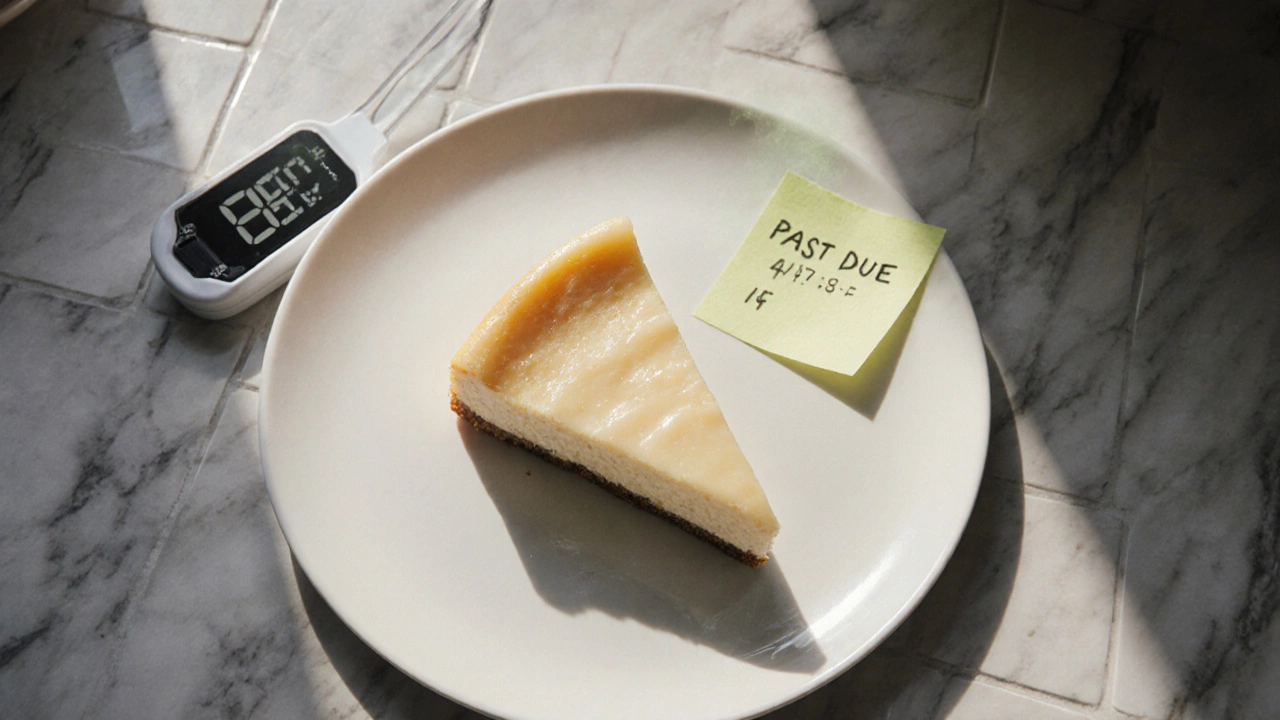
When Should You Skip That Slice? Understanding Cheesecake Safety
Learn when and why to avoid cheesecake, covering food‑safety signs, health conditions, ingredient risks, storage tips, and safe alternatives for a worry‑free dessert.
When talking about Food Poisoning, the illness caused by eating food contaminated with bacteria, viruses, parasites, or toxins, most people picture sudden cramps and a frantic dash to the bathroom. The truth is, the risk starts hours, sometimes days, before you even sit down to eat. Knowing the chain of events—from how food is handled to how long it sits—lets you break the cycle before anyone gets sick.
One of the biggest allies in the fight against food poisoning is Food Safety, a set of practices that keep food free from harmful microbes. Good food safety isn’t a single rule; it’s a suite of habits that include proper cooking temperatures, clean surfaces, and diligent hand washing. When you pair food safety with Refrigeration, the process of keeping foods at or below 4°C (40°F) to slow bacterial growth, you dramatically lower the odds of dangerous microbes multiplying.
But refrigeration alone isn’t enough. Understanding Shelf Life, the period a food remains safe and tasty under proper storage conditions helps you decide when to toss leftovers and when they’re still good to eat. Some items, like fresh berries, spoil within a couple of days, while hard cheeses can stay safe for weeks. Ignoring shelf life is a common way to invite Bacterial Contamination, the presence of harmful bacteria such as Salmonella, E. coli, or Listeria in food and set the stage for food poisoning.
These entities form a clear chain: food poisoning encompasses bacterial contamination; it requires solid food safety habits; and it is heavily influenced by proper refrigeration and respect for shelf life. When any link breaks, the risk spikes. For example, leaving a freshly baked cake out for too long can let spores grow, especially if the cake contains perishable toppings like fresh cream or fruit. The same principle applies to homemade fudge, brownies, or any dessert that isn’t sealed and chilled quickly.
Practical steps to keep the chain intact start in the kitchen. Always pre‑heat ovens to the right temperature—165°F (74°C) for poultry, 160°F (71°C) for most meats—because undercooked food is a breeding ground for pathogens. Use a food‑grade thermometer; it takes seconds and removes guesswork. After cooking, move foods to a shallow container and refrigerate within two hours (one hour if the ambient temperature is above 32°C/90°F). This “two‑hour rule” is a cornerstone of food safety and keeps bacterial growth in check.
When storing baked goods, consider both moisture and temperature. Fudges and brownies stay fresh longer if wrapped tightly in plastic and placed in the fridge; otherwise they dry out and become a playground for mold. For frost‑topped brownies, a single layer of parchment paper under the frosting can prevent sogginess while still allowing you to keep them chilled. If you plan to keep desserts for a week or more, freezing is your friend—just thaw them in the fridge, not on the counter, to avoid sudden temperature spikes that encourage bacteria.
One often‑overlooked area is cross‑contamination. Cutting boards, knives, and hands that touch raw meat should never touch ready‑to‑eat foods without a wash. Even a tiny splash of raw juice on a cake batter can introduce harmful microbes that survive the baking process if the temperature isn’t high enough. Using separate colored chopping boards (red for meat, green for veggies, yellow for bread) makes the rule visual and easy to follow.
Beyond the kitchen, remember that food poisoning can strike anywhere food is stored or served—picnics, potlucks, or birthday parties. Portable coolers with ice packs keep salads, dips, and frosting safe for a few hours, but they’re not a substitute for a refrigerator. Keep perishable items in the cooler until you’re ready to serve, then return leftovers to proper storage within the same two‑hour window.
Finally, know the signs of food poisoning so you can act fast. Symptoms usually appear within a few hours to a couple of days and include nausea, vomiting, diarrhea, abdominal cramps, and sometimes fever. If you suspect severe dehydration, bloody stools, or symptoms lasting more than three days, seek medical help. Early detection reduces complications and helps you identify which foods may have been the culprit, so you can adjust your storage habits for next time.
The collection below pulls together practical guides that dive deeper into each of these areas. You’ll find advice on whether homemade fudge needs refrigeration, how to store brownies for maximum freshness, why chilling cookie dough makes a difference, and many more tips that turn everyday baking into a safe, enjoyable experience. Keep reading to arm yourself with the exact steps that keep food safe and your desserts delicious.

Learn when and why to avoid cheesecake, covering food‑safety signs, health conditions, ingredient risks, storage tips, and safe alternatives for a worry‑free dessert.